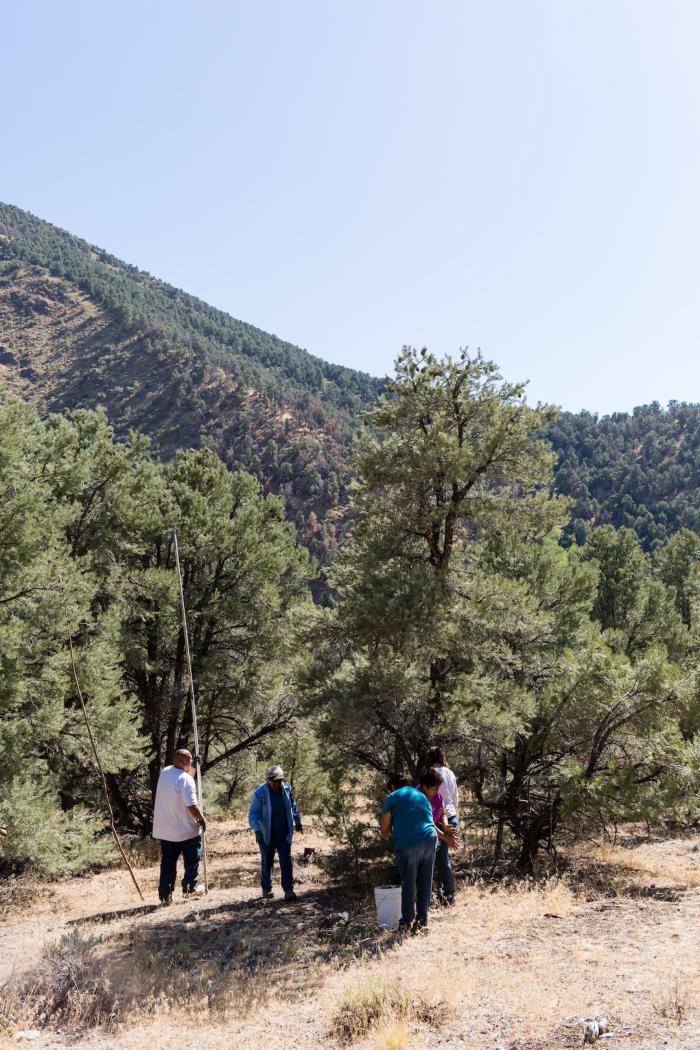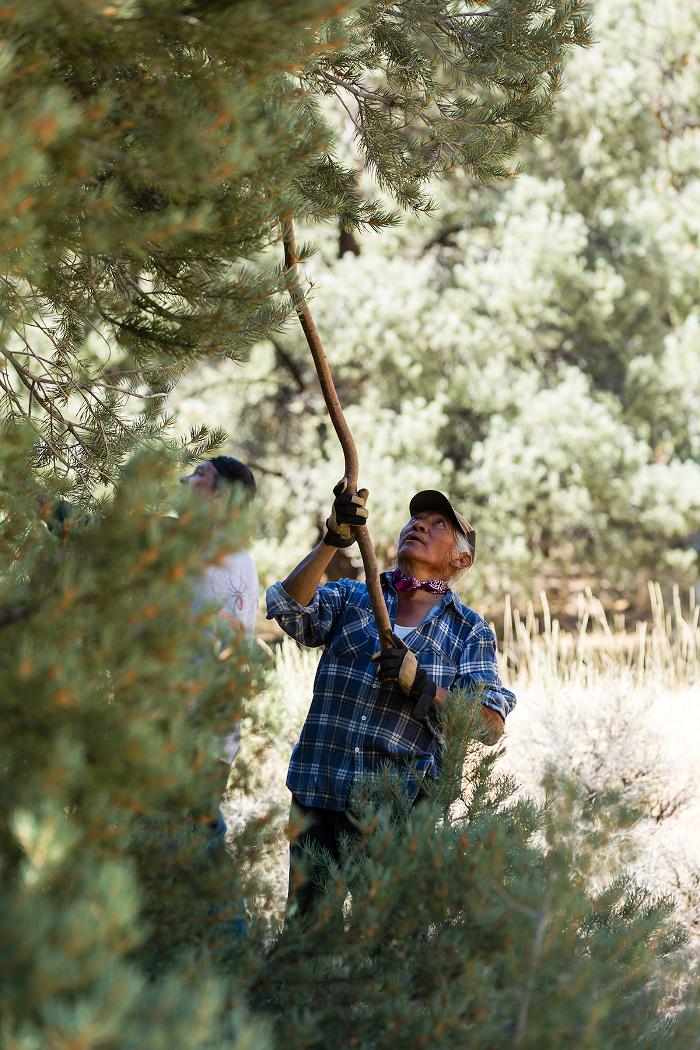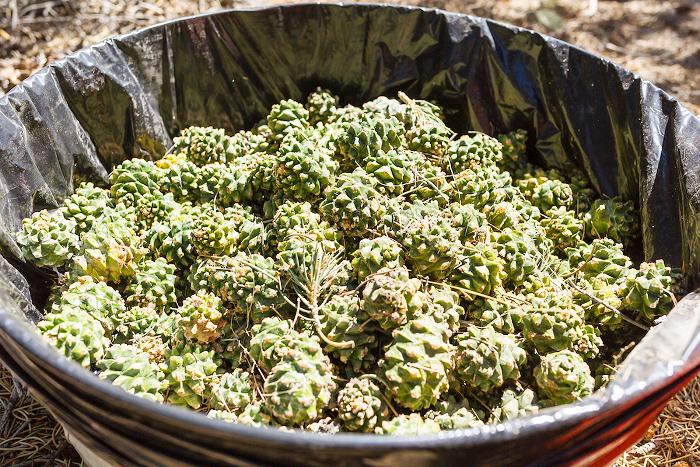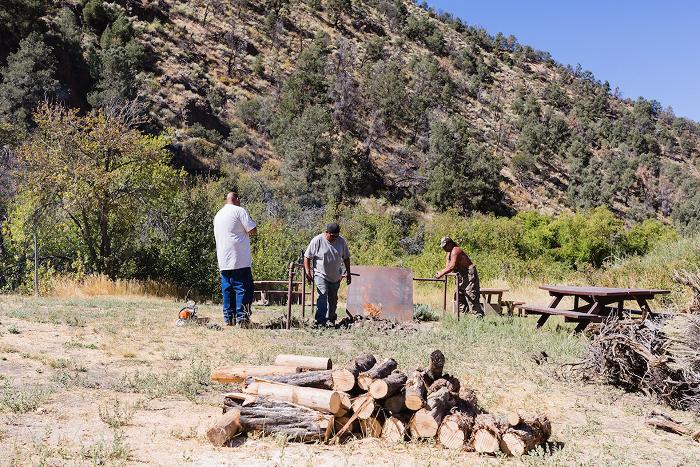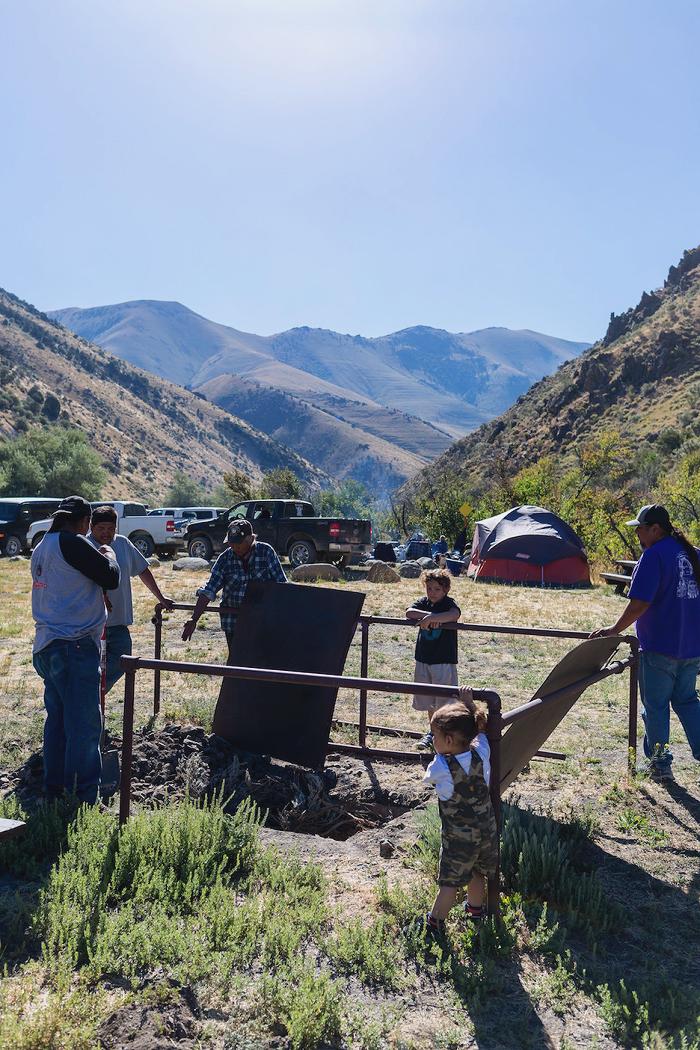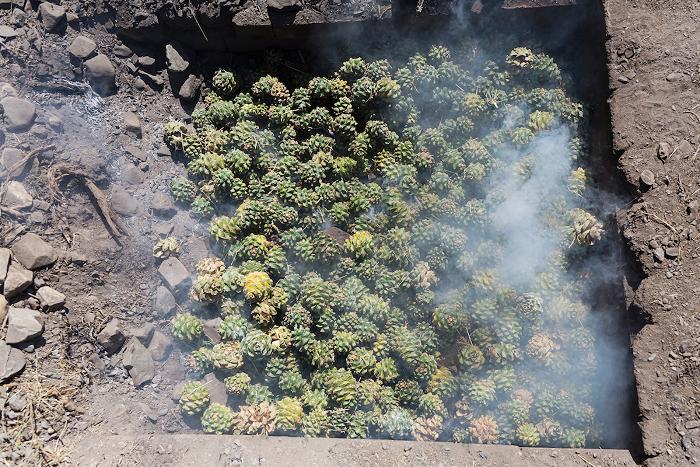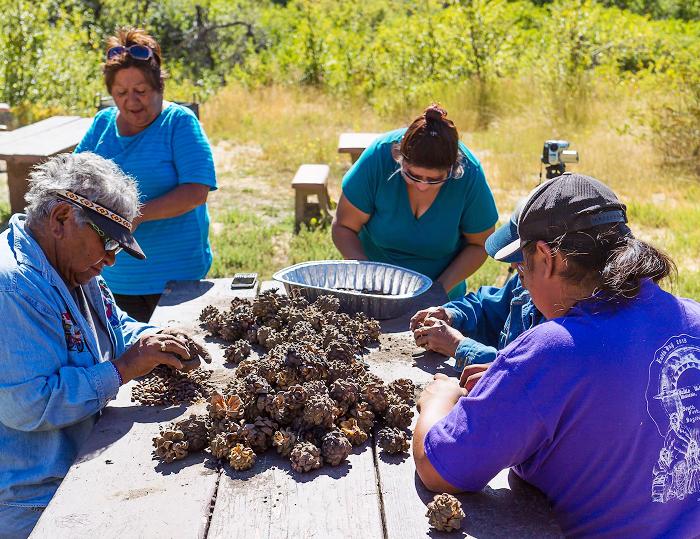 |
Canku Ota
|
 |
|
(Many Paths)
|
||
|
An Online Newsletter
Celebrating Native America
|
||
|
November 2016 - Volume
14 Number 11
|
||
|
|
||
|
Pine Nuts—Sacred
Staple From Highland Forests
|
||
|
by Stephanie Woodard
- Indian Country Today Media Network
|
||
|
“Everything depends on the water and the trees,” said spiritual leader Johnny Bob, from the Yomba Shoshone Tribe, as he prayed for the start of a Western Shoshone pine-nut gathering. In September, members of several bands came together in a steep-walled mountain valley in central Nevada to collect the protein- and nutrient-rich nuts that were once the mainstay of their diet. Some people took hold of long sticks and began to knock the sticky green cones off the tops of the pinyon trees. Others gathered fallen branches to chop up for the fire in which they would later roast the cones to release the sweet, creamy nuts. These can be eaten out of hand, added to soups and stews or parched and ground for gravy or mush. “As we collect, we are pruning the trees to ensure there are even more cones next year. We are also cleaning the forest,” explained Joseph Holley, former chairman and now council member of the Battle Mountain Band of Te-Moak Western Shoshone.
The piles of cones grew, with some bouncing off someone’s head on their way down from the treetops. Children laughed, as mothers tried to persuade them to tie up their hair tightly to minimize the gooey mess. “It’s a man bun!” one girl teased her brother. “It’s a good time,” said Holley, smiling. “Just what we need, and what the trees need.”
This critical food source, along with game living in the forest, began to disappear during the late 19th century, as newly arrived settlers chopped down trees for fuel over many square miles around towns and mining operations. Starting in the 20th century, these losses were amplified by the Bureau of Land Management and U.S. Forest Service, which together have uprooted more than 3 million acres of pinyon-plus-juniper woodlands. To destroy the forests, the federal agencies use tractors to drag gargantuan chains through them, ripping up everything in their path. The ruined landscapes look like the aftermath of a nuclear holocaust. Sometimes, the agencies eliminate woodlands in order to increase rangeland for grazing, an activity that further damages the fragile arid lands where pinyons flourish. Scientists estimate that soil in an erosion-prone “chained” landscape may take 10,000 years to recover.
At other times, the agencies claim that “chaining” curbs fire risk. However, research shows that deforestation increases the fire danger rather than diminishing it. Scientists also note that pinyon-juniper wildfires are extremely infrequent, on the order of several centuries apart. The Foundation for Economic Education compares this federal policy, which continues to the present day, to Brazil’s reckless despoiling of the Amazon in favor of ranching, logging and other interests.
Now that so many trees have been destroyed, some have suggested reviving them as nut groves, as has long been traditional in Europe. In Italy during World War II, many survived on chestnuts and other foods they could glean in the forests and fields. Nowadays though, pine nuts are a luxury food, fetching as much as $60 per pound. To bring the cost down, some supermarkets sell a cheap Chinese mix of edible and non-edible nuts that can cause nausea, intestinal distress and a metallic taste in the mouth that lasts weeks or months. How an American pine nut revival would fit into this spectrum of quality and price is unclear.
Restoring Diet and Health For indigenous people, substituting modern foods for traditional ones has typically meant increases in degenerative diseases such as cancer, cirrhosis and diabetes. “The change in diet is the reason we have these diseases,” said Battle Mountain Band tribal council member Emerson Winap. He called the destruction of the forests part of a failed attempt to break his people’s spirit. “We never knew those diseases,” said Reggie Sope, a spiritual leader from the Shoshone-Paiute Tribe, in a separate interview. “Today, we have to create new words for them, which can be translated along the lines of ‘something that eats you from the inside out.’ They happen because we were cut off from hunting, gathering and the freedom that accompanies them.”
The federal agencies need to use common sense, instead of allowing industry to contaminate vast amounts of land and water, Sope said. “I’ve looked at mines in several states. I’ve seen the devastation. The rivers around here test positive for mercury and other pollutants. Making this worse for us, we have minimal access to both health care and healthy foods. At Owyhee, Nevada, where we are, diabetics have to travel 200 miles round trip to stock up on the vegetables doctors say they must include in their diet.” The solution, said Sope, was a return to traditional foods. That means large and small wild game, fish, pine nuts, additional seeds, and roots, including camas and wild potatoes, carrots and onions. About the landscapes where these foods are found, Sope said, “When we are there, we are at peace.” Sope added: “These are things we hold sacred and have done so since the beginning of time. They told us we had to learn modern ways, and now we have attorneys, judges, health-care workers and more. But we are left with the question: What part of ‘sacred’ do they not understand?”
|
||||||||||||||
|
|
|
|
||
|
|
||
| Canku Ota is a free Newsletter celebrating Native America, its traditions and accomplishments . We do not provide subscriber or visitor names to anyone. Some articles presented in Canku Ota may contain copyright material. We have received appropriate permissions for republishing any articles. Material appearing here is distributed without profit or monetary gain to those who have expressed an interest. This is in accordance with Title 17 U.S.C. Section 107. | ||
|
Canku Ota is a copyright ©
2000 - 2016 of Vicki Williams Barry and Paul Barry.
|
||
 |
 |
|
|
The "Canku
Ota - A Newsletter Celebrating Native America" web site and
its design is the
|
||
|
Copyright ©
1999 - 2016 of Paul C. Barry.
|
||
|
All Rights Reserved.
|
||
